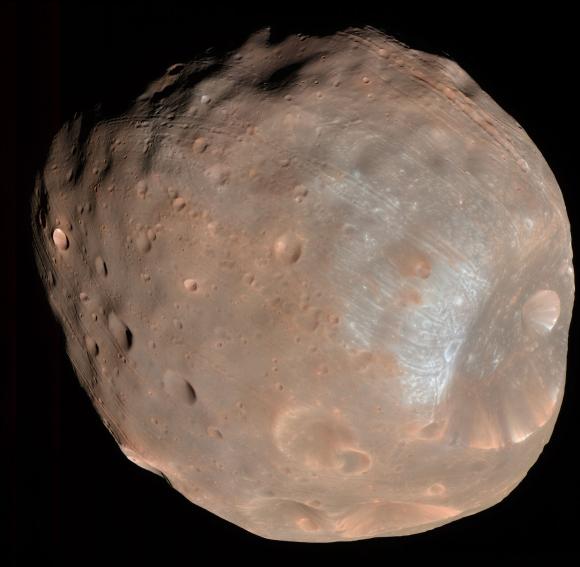PROVIDENCE, R.I. [Brown University] — NASA has tapped a team of Brown and MIT researchers to be part of its new Solar System Exploration Research Virtual Institute (SSERVI). The team will help to develop scientific goals and exploration strategies for the Moon, near-Earth asteroids, and the Martian moons Phobos and Deimos.
“These are the most accessible solar system targets for robotic and human exploration beyond Earth,” said Carle Pieters, professor of geological sciences and principal investigator for the Brown/MIT team. “They are diverse bodies that together may hold the key to understanding the formation and evolution of our solar system.”
SSERVI builds on a previous NASA Lunar Science Institute of which the Brown team was a founding member. SSERVI’s mission is to facilitate collaborative scientific research relevant to NASA’s exploration goals. The Brown/MIT group is one of nine selected from a pool of 32 proposals.
“We look forward to collaborative scientific discoveries from these teams,” said Jim Green, director of the Planetary Science Division of NASA’s Science Mission Directorate in Washington. “These results will be vital to NASA successfully conducting the ambitious activities of exploring the solar system with robots and humans.”
The Brown/MIT team will focus on the environment and evolution of the exploration targets. Among the questions the researchers will explore: How did the Moon form and what processes occurred as it cooled from its early molten state? What can asteroids reveal about the origins of planets and early planetary processes? How are water and other volatiles distributed on these bodies, and what can that tell us about the evolution of volatiles in the solar system?
The team that will address those questions consists of 19 Brown faculty members, seven from MIT, and researchers from four other institutions and seven foreign countries. Maria Zuber, who earned her Ph.D. from Brown, will lead the effort on the MIT side.
The research questions the team will explore each present new exploration challenges. One of the goals of the Brown/MIT team is to approach those challenges through “science and engineering synergism.”
“The idea is to bring the scientists and the engineers together at the beginning of the process and build a mission from the bottom up,” said James Head, professor of geological sciences and co-investigator on the team. “This is the approach that helped to make the later Apollo missions — Apollo 15, 16, and 17 — so successful from both a technological and scientific point of view.”
Two astronauts will help the team develop their science/engineering strategy. Dave Scott, commander of Apollo 15, is a visiting professor at Brown. Jeff Hoffman, veteran of five space shuttle missions, is a professor at MIT.
“We’re very excited about the team we’ve put together,” Pieters said. “We’re looking forward to working with the other great teams NASA has assembled.”

